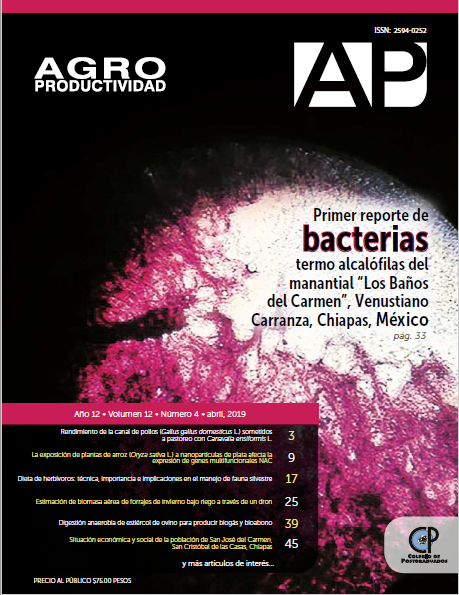VARIETAL CHARACTERIZATION OF CHILE HABANERO ROSITA AS A CRIOLLA VARIANT OF TRADITIONAL HABANERO PEPPER
Main Article Content
Keywords
Varietal characterization, ex situ, landraces
Abstract
Objective: Characterize the Rosita variety of habanero pepper (Capsicum chinense Jacq.) as a variant landrace of the traditional habanero for conservation and genetic improvement purposes.
Design/methodology/approach: Fruits were collected from ten production units in 2015, reproducing and characterizing them. The varietal characterization was carried out ex situ under greenhouse and fertigation conditions based on the IPGRI guide (1995), characterizing the seedling in nursery and the plant to transplant: leaves, stem, flower, fruit and seed. The fertilization was carried out applying every third day a gram of triple fertilizer 19 (N-P-K) dissolved in water, from the appearance of the first true leaves, after the transplant the formula 100-100-100 (N-P-K) was applied by fertigation. With the data obtained and the use of descriptive statistics, averages and standard deviations were obtained for the quantitative characteristics. The qualitative characteristics gave value to a certain characteristic from its highest absolute frequency.
Results: The distinguishing characteristics found were: hypocotyl with anthocyanins and pubescence; plant with semi-perennial cycle; habit of prostrate growth; anthocyanins in the knots; height greater than 85 cm; color of greenish yellow corolla; two or more flowers per armpit acampa breadfruit; transverse wrinkling of the fruit and medium-sized rough seed.
Limitations on study/implications: The presence of some pests was treated with chemicals for whitefly, such as CalypsoÒ (Thiacloprid), ActaraÒ (Thiamethoxam), EvisectÒ (Tiocyclam hydrogenoxalate), and AplaudÒ (Buprofezin).
Findings/conclusions: The distinctive morphological characteristics of habanero pepper Rosita were found in seedlings, flowering plants, fruits and seeds, which differentiate it from traditional habanero peppers.

